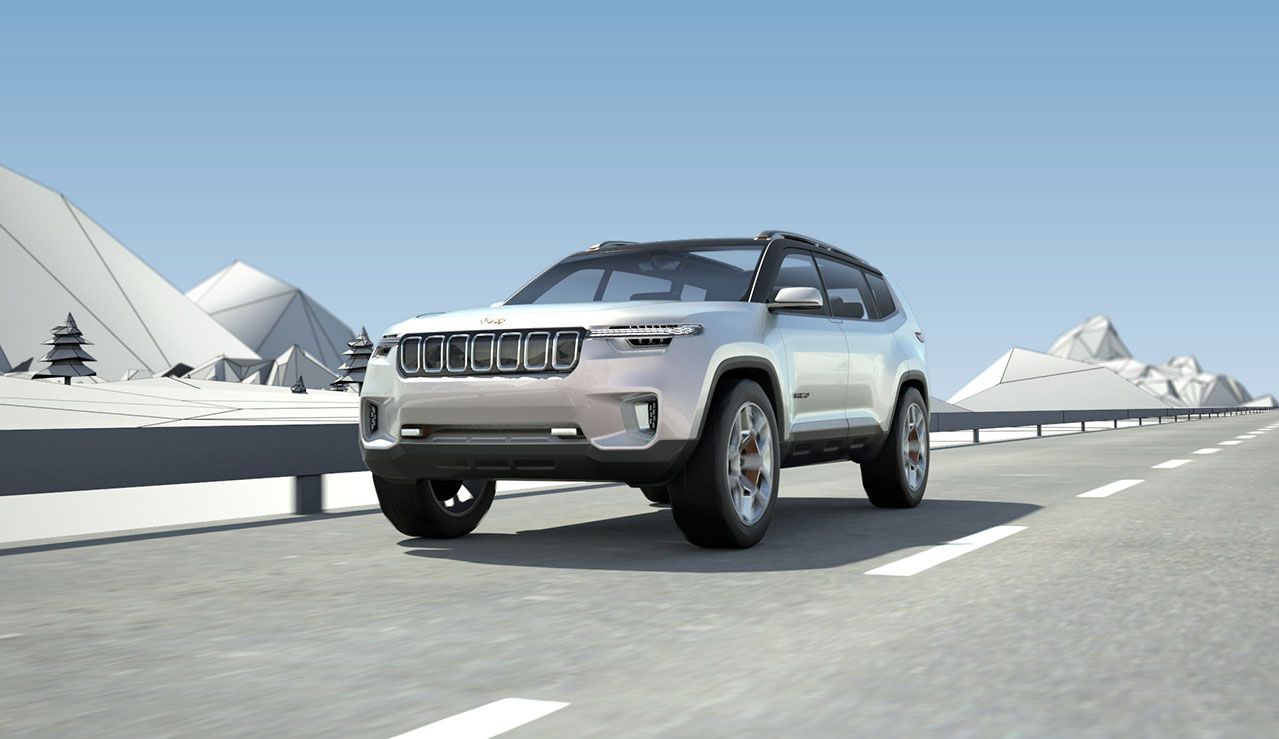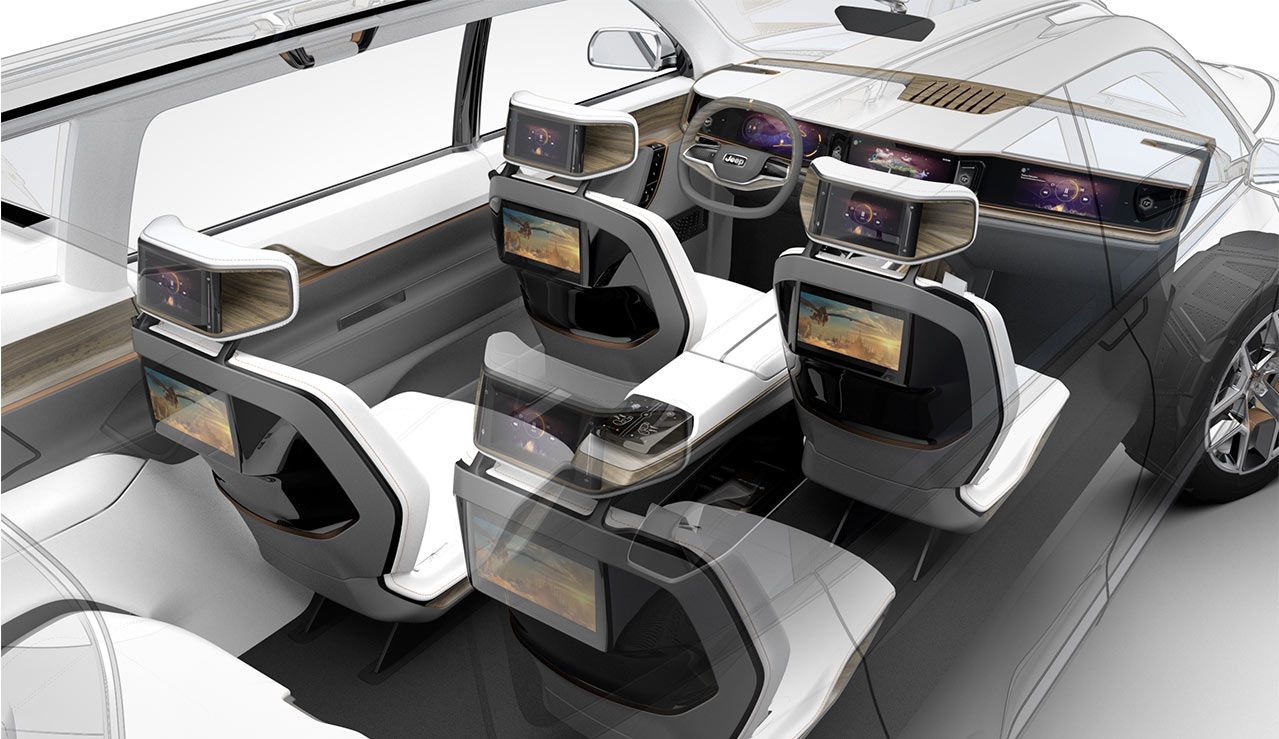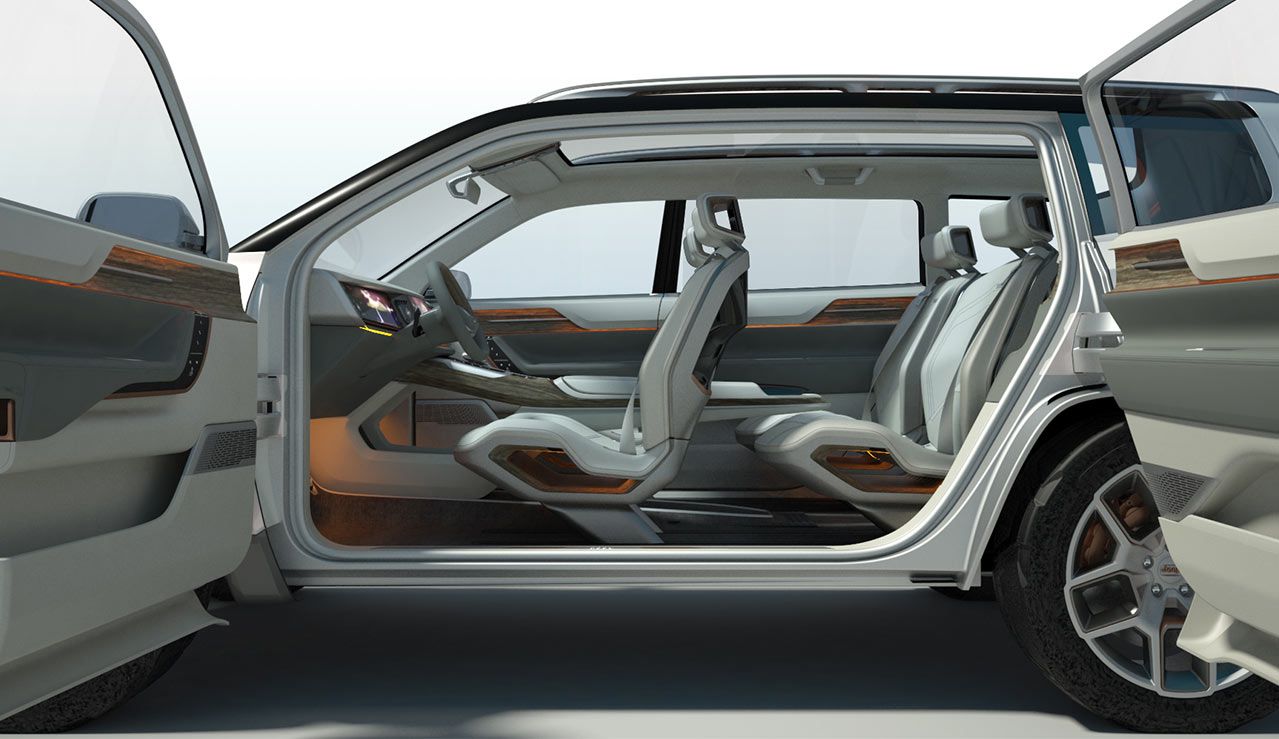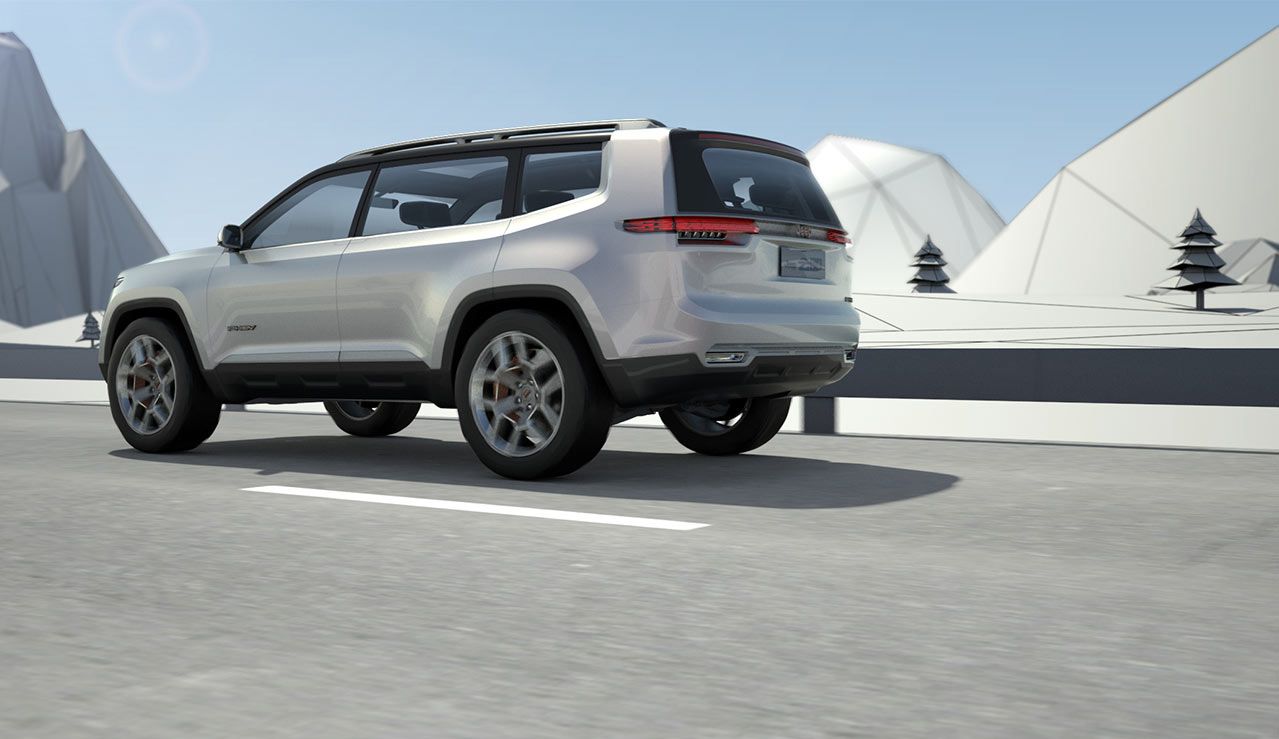Some automakers are synonyms with specific characteristics. Ferrari and Lamborghini are synonymous with Italian power and performance. Rolls-Royce and Bentley are quintessential marquees known for their opulence and luxury. Then there’s Jeep, which is known for its ruggedness and off-road capabilities. It figures then that when news first broke in 2015 that Jeep was going hybrid with some of its models, it was, to say the least, jarring to the senses. Fast forward to the 2017 Shanghai Auto Show and we finally get to see what a Jeep hybrid looks like in the form of the Yuntu, a three-row, seven-seater, full-sized SUV concept that’s laying the groundwork for a new era in the company’s long and illustrious history.
To be clear, there’s no official word yet from Jeep about the production prospects of the Yuntu Concept. There is, however, a strong possibility that we’re headed in that direction anyway. Remember, Jeep CEO Mike Manley has been a strong advocate of dipping the company in the hybrid market, most recently confirming at the 2017 Geneva Motor Show the arrival of a hybrid version of the Wrangler. The Yuntu, of course, is far different from the Wrangler, both in aesthetics and purpose. But the mere sight of the concept in Shanghai is an indication that the brand has a more elaborate hybrid plan that will involve numerous models receiving this specific powertrain. Just goes to show how brand images are now giving way to addressing the future of the auto industry.
Continue after the jump to read the full story.
Follow the crowd at chow time or risk losing out on the meatballs
The say that a consumer brand, no matter what it is, is only as good as the number of people who pay to buy them. If sales are good, the brand is strong and the people who own them are happy. If sales aren’t good, the brand struggles and the people behind them get agitated.
In light of these wise words, it’s easy to understand why Jeep, long regarded for its “get-down-and-dirty” image, is now eschewing that rough and rugged mentality in favor of adopting a technology that’s more Matt Damon than Bear Grylls. The truth is that hybrid powertrains have become the way to go for a lot of automakers. That's partly because governments all over the world have become more proactive in championing the technology to help address the world’s environmental issues. All the same, Jeep’s decision to debut the Yuntu Concept in Shanghai, China is a calculated move in an attempt to gain some traction in a country that’s fast embracing this system, thus turning itself into the world’s biggest market for hybrid cars.
The whole concept of a hybrid Jeep may have sounded preposterous as recently as five years ago, but times have changed and a consumer brand has to adapt to the changing times and more importantly, evolving customer preferences if it has any shot of remaining relevant in the eyes of the buying public.
As far as the Yuntu Concept is concerned, it’s unlikely that the production version of the SUV will retain most of the concept’s styling features. As it is now, the concept comes with suicide doors on the rear and an interior that’s a little too concept-heavy, even by today’s standards. Overall though, it looks the part of a proper Jeep model with its aggressive design, massive arches, and rugged personality. Yes, the Yuntu is still rough around the edges, but make no mistake, underneath that body lies a plug-in hybrid powertrain of some kind. Jeep has been coy on divulging details, but let it be known that it’s the first of its kind for the American brand.
At the moment, it appears that a production version of the Yuntu Concept will hit the Chinese market first, hence its debut in Shanghai. If it does get that far, look for the production model to be built through the local Fiat-GIAC joint venture and be sold in the country, either as a general release model or a limited edition exclusive. On the other hand, there’s been no discussion about the possibility of the production model arriving in the U.S., although if it does, it might not be badged as a Jeep model. A Chrysler, perhaps? Image, after all, still matters, right?




